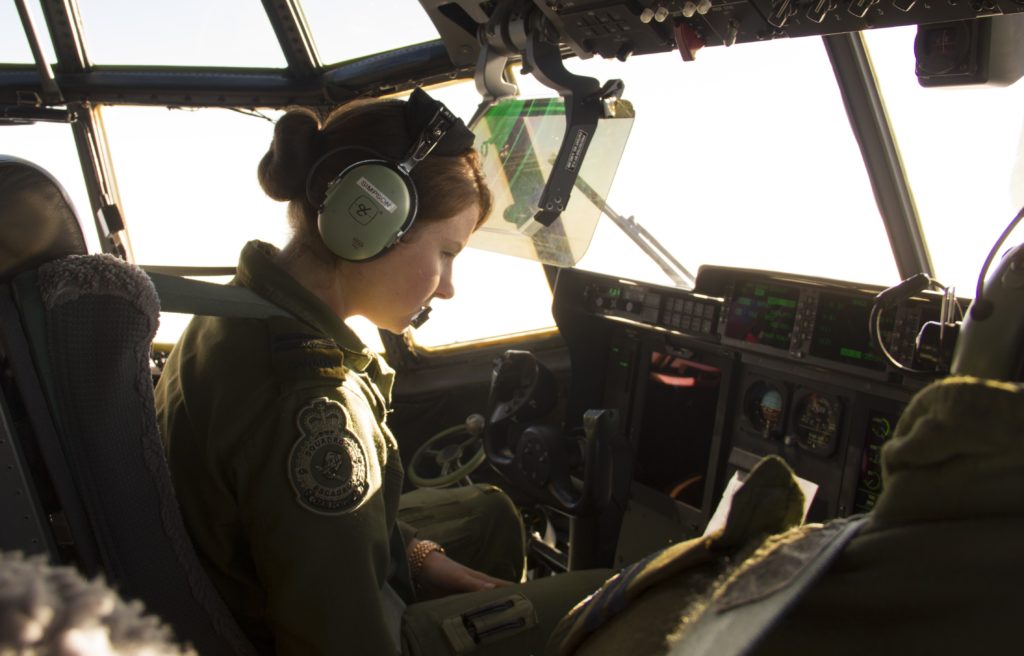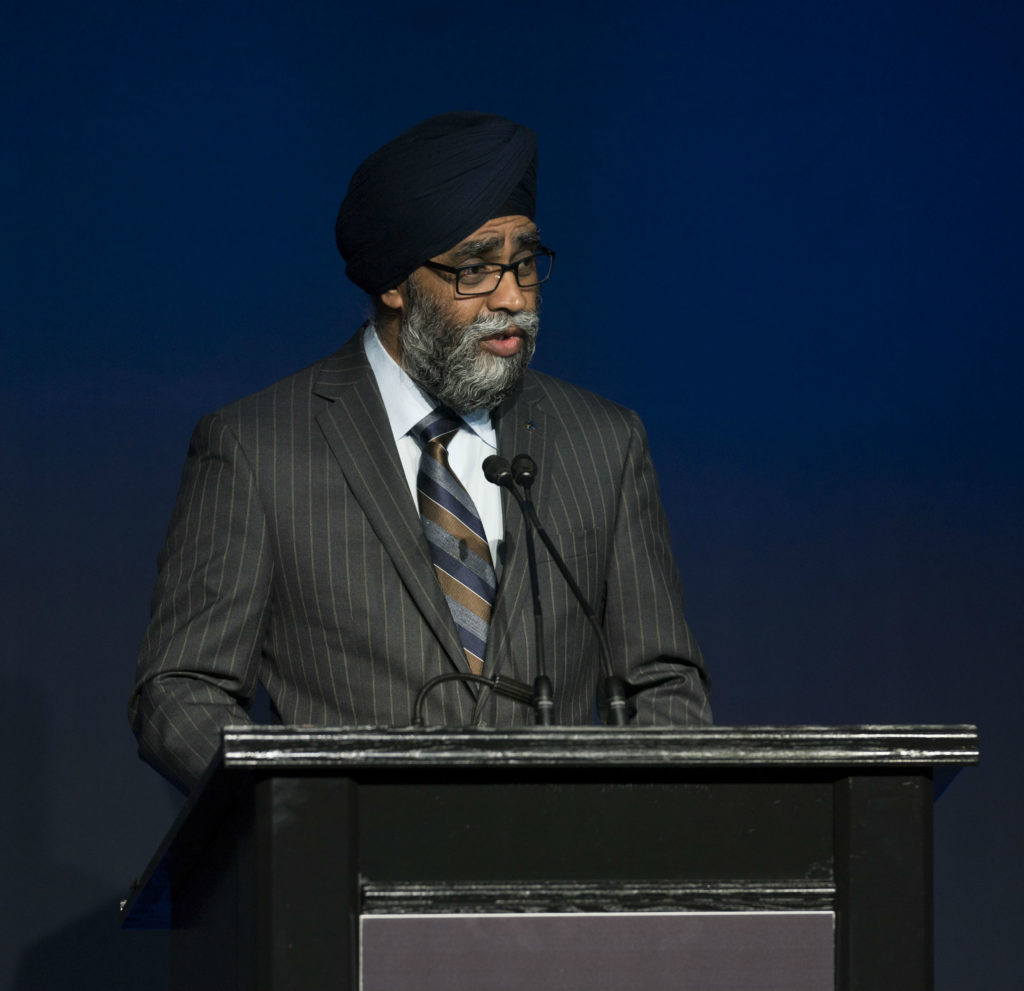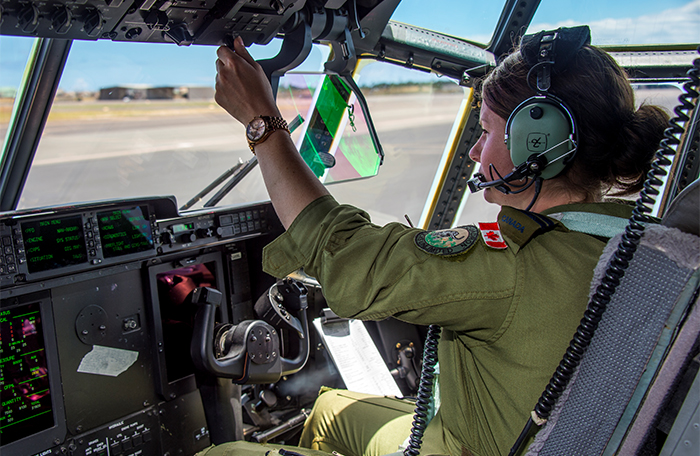Estimated reading time 8 minutes, 37 seconds.
Aerospace and defence industry executives gathered at the 2018 CANSEC trade show in Ottawa last week to hear Defence Minister Harjit Sajjan unveil the details of the Canadian Armed Forces (CAF) defence investment plan. But they would have been wise to pay equal attention to the words of Public Services and Procurement Minister Carla Qualtrough and Innovation, Science and Economic Development (ISED) Minister Navdeep Bains.
The investment plan provided some clarity to many projects outlined in the Liberal government’s 2017 defence policy, placing dollar ranges to about 200 Army, Navy, Air Force, Special Operations Forces and Joint programs contained in the Defence Capabilities Blueprint.

“These are all real projects. And they are all fully funded,” said Sajjan, calling the previous Conservative government’s Defence Acquisition Guide largely “aspirational and unfunded.”
He added: “There is enough flexibility in the funding process to allow for adjustments as needed over the lifespan of the policy, accounting for changing circumstances over the next 20 years.”
However, the CAF spent just $3.9 billion of the full $6.2 billion allotted for capital investments last fiscal year. About 30 per cent of that was due to better contracts resulting in projects that came in lower than planned and unused risk mitigation funding. But 27 per cent was the result of internal project management problems, including additional time required to analyze options of some projects, and 40 per cent was attributed to delays by industry in delivering goods and services.
“Rest assured, the unspent $2.3 billion dollars is protected. Those funds remain available when we need them,” said Sajjan.
National Defence intends to refresh the plan each year and seek Treasury Board approval every three years to ensure funding aligns with department priorities.
“You have been integral to the development of our defence policy, and you are essential in helping us implement it,” he reminded the industry executives.
But as companies determine how to shape their value propositions and industrial and technological benefits proposals for many of those 200 projects, the remarks to heed may have come from Minsters Bains and Qualtrough.
Canadian private sector companies trail a majority of their OECD counterparts when it comes to research and development, but Bains credited the defence sector for its over $400 million in R&D spending, noting that is about four and a half times greater than other Canadian manufacturing industries.
“It’s such an important sector,” he said, contributing over $6 billion to the economy and more than 60,000 jobs. “We need to see significant investments in research and development.”
But much of that employment involves science, technology, engineering and math (STEM)-related jobs that are largely being performed by men. Defence does better than the industrial average, but it falls well short of where the government would like it to be. The government in April passed Bill C25, amending several business corporation and non-profit acts that, among other things, will make it mandatory for a publicly traded company to have a diversity and gender equity plan with targets.

Bains said that would also apply to the defence sector value propositions companies must submit as part of the bid proposal. “Our desire is to make sure that companies have a diversity plan and a gender plan as well. We are very serious about this issue. It differentiates Canada and will allow us to succeed in the long run,” he said after stressing he views the world through the eyes of his seven- and 10-year-old daughters.
“In all of our procurements, military and otherwise, we are…looking at ways to ensure opportunities for businesses owned or led by Canadians from under-represented groups, such as women, Indigenous Peoples, and persons with disabilities,” said Qualtrough, pointing to recent examples in the national shipbuilding strategy that is acquiring vessels for the Royal Canadian Navy and Coast Guard.
“Under the Women’s Entrepreneurship Strategy announced in Budget 2018, my department will work with women-owned small-and medium-sized businesses (SMEs) to increase their participation in the federal procurement process supply chain from 10 per cent to 15 per cent,” she added.
Bains touched on the importance of key industrial capabilities (KICs) to defence procurement. First introduced as part of a 2013 report on how to better leverage military acquisition, KICs have become a means to encourage more investment in areas of strength across the sector. In April, ISED said KICs would be used in its ITB policy to encourage investment in five tech areas: advanced materials, artificial intelligence, cyber resilience, remotely piloted systems and autonomous technologies, and space systems.
“KICs is really based on two fundamental principles: one is play to our strengths and take advantage of our footprint in Canada, and the other is how do we play a leadership role in these new emerging technologies,” he said, noting a PricewaterhouseCoopers study that projects a $50.7 trillion global market for artificial intelligence (AI).
Bains also highlighted a number of new funding initiatives intended to help SMEs “grow and scale” to be able to access global supply chains. While the opportunities apply to all industrial sectors, initiatives like Innovation Solutions Canada, the Strategic Innovation Fund, and superclusters “are very much aligned with defence,” he said. “All five superclusters have participation from the defence industry.”

The superclusters include digital technology, protein industries, ocean technology, AI-powered supply chains and advanced manufacturing.
Qualtrough highlighted improvements to the procurement process itself, including “employing innovative procurement practices” on the Navy’s future surface combatant “to ensure we have maximum competition. We also want to ensure that we are picking from the best possible solutions bidders can put forward,” all of which could have implications for the CF-188 Hornet replacement project. Under a step known as the Cure Process, bidders, for example, can adjust their proposals “if they have not demonstrated compliance or conformance with the RFP requirements.”
“In general, we designed better supplier management tools to improve the performance and behaviour of companies, particularly in larger contracts,” she said. “We’ve also published clear criteria for assessing performance in competitions…[and] our pricing framework is being redesigned and contract terms and templates are streamlined and standardized.”
Of note to companies seeking to supply the Air Force on smaller contracts, DND now has delegated contracting authority for up to $1 million for goods and $2 million for services; that will increase to $5 million for both goods and services by 2019.
“My job is to eliminate the barriers on the process side so that we can actually get things built and bought,” Qualtrough said after her presentation.








